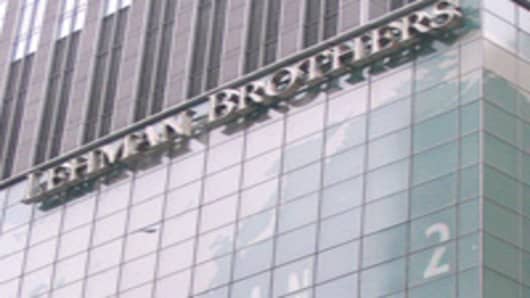In a portion of the Lehman examiner’s report unsealed Wednesday, Anton Valukas, appointed to investigate the circumstances surrounding Lehman Brother’s collapse and liquidation, says that the failed investment bank may have cause to sue Goldman Sachs and Barclays for what might be a “fraudulent transaction.”
The transaction transferred $2 billion in assets from C.M.E. Group, which operates the Chicago and New York mercantile exchanges. The assets were collateral and clearing deposits held by C.M.E. and linked to Lehman’s futures and options contracts — proprietary trades that Goldman, Barclays, and another firm, DRW Trading, would take on along with the collateral transfer in question.
The transfer resulted in “a loss to Lehman exceeding $1.2 billion,” according to the newly disclosed section of the report that James M. Peck, bankruptcy judge for the southern district of New York, ordered to be unsealed Wednesday.
“The Examiner concludes that an argument can be made that the transfers at issue were fraudulent transfers avoidable” under bankruptcy law, the examiner’s report states.
Referring to Lehman Brothers International, the report later says “LBI may have a colorable claim against CME, or any of the firms that bought LBI’s positions at a steep discount during the liquidation ordered by the CME, for the losses that LBI sustained as a result of the forced sale of house positions held for the benefit of LBI and its affiliates.”
On the other hand, both the clearing house and the parties receiving the Lehman assets could well be protected from suits, the examiner noted.
[T]he Examiner concludes that the evidence does not support the existence of colorable claims because (i) the CME and its officers likely would be immune because the CME acted within its statutory role as a self? regulator of its exchanges, (ii) the Commodity Exchange Act (“CEA”)6839 likely would preempt most suits against both the CME or the transferees, and (iii) the transfers likely were protected from avoidance by the safe?harbor provisions of the Bankruptcy Code.
Goldman and Barclays declined to comment.
“At the request of the CME, DRW submitted bids for the Lehman portfolios and was the best bidder for three of the five portfolios,” DRW said Wednesday on its Web site. “We were able to provide competitive pricing for these very large, complex and risky portfolios in a period of unprecedented market turmoil.”


